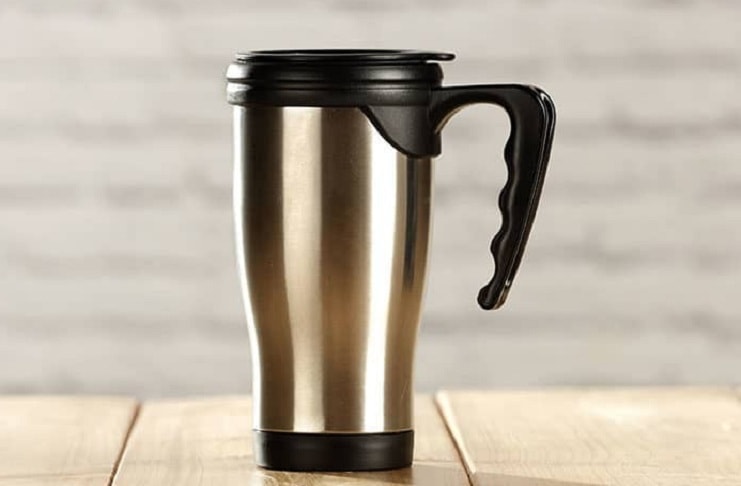It is no wonder, considering the time we as a society spend in our vehicles, that travel mugs have become almost as essential an auto accessory as power windows, CD players and air conditioning. One would think that it probably did not take very many spilled cups of hot coffee from a regular cup or mug before someone, somewhere finally figured out that a special design was needed to protect the driver and enhance the pleasure of that fresh “cup o’ Joe” on the way into work every morning. Well, that is close.

The first cups or mugs go back to the Stone Age – specifically, the Neolithic Age – when vessels for holding liquid to drink where hewn from animal bone. Fast forward several tens of thousands of years and many billions of mugs later and man would finally see the need to keep a beverage hot or cold for an extended period of time. This led to the development of the first vacuum bottle in 1892 by Scottish scientist James Dewar.
Dewar’s new bottle or “flask” utilized the vacuum process to eliminate the air inside the open space of the bottle that is a natural heat conductor, which causes liquids to cool to room temperature in short order. The “Dewar flask” design was improved upon about a decade later by the Germans. They decided to hold a nationwide contest in 1904 to determine the name of the improved product. The Germans chose “Thermos” – derived from the Greek word “Therme” or “heat” – and began marketing the “Thermos” bottle in America in 1906.
Just a year later, Americans were getting their Thermos bottles from The American Thermos Bottle Company in Brooklyn, New York. Over the next several decades, the Thermos bottle became a standard item in every blue collar worker’s lunchbox and every outdoorsman’s campsite.
It did not take a rocket scientist to recognize the next step in the evolutionary process and utilize the insulating properties of the Thermos bottle into the design of a Thermos travel mug with a “Sippy cup” style lid – the kind that smaller children use when learning to drink from a cup. In fact, good marketing – particularly in the 1980s – is likely the reason that so much research went into the development of the modern day stainless steel travel mug.
Baby boomers and “echo” boomers were taking to the roads in droves as the morning commute teamed up with urban sprawl to cause a tangled nightmare of morning drives lasting, in some cases, for hours. Marketers from convenience stores to coffee shops began using insulated and oversized coffee travel mugs to breed customer loyalty.
The proud owner of a Starbucks travel mug could get a discount, even at the drive-through window. This meant less money for a premium cup of coffee; while saving a paper coffee cup, thus, the environment – and all without have to stop and leave the comfort of the vehicle. Meanwhile, some convenience stores even gave the store mug owning customer a free cup of coffee to go – knowing the customer would mostly likely buy a pastry to have with their coffee.
The question now is – what kind of travel mug is the best travel mug?
First, consider the materials used – steel or plastic. Plastic is cheap and is often the “Gimme” mug of choice for most businesses, but over time, the plastic will actually absorb the flavor of the beverage into the mug – especially if the beverage is hot. This can cause problems with the taste of the beverage later, particularly if your change beverages from a hot drink to a cold drink. Add to that the fact that steel is naturally much more durable. Of course, if it was free from the store – so, who cares, right?
The lid is important, too. Ideally, it should “screw” on rather than “pop” on for one very good reason; a lid that pops on can just as easily pop off – and it will invariably be at just the wrong moment while you are driving. One other thing to consider with regard to the lid; make sure the opening not only seals well to prevent leaking, but that the it also conforms well to your mouth. Otherwise, you will be dripping hot coffee all over that nice clean shirt or blouse every morning.
Then consider the size of the mug. If it does not fit in your car or truck cup holder, it is going to be more of a problem than it is worth.
Finally – “have handle, will travel” – sounds good, but is it right for you. The handle might make it easier to carry your mug, especially with other items in your hand. However, just like the size of the mug – you need to make sure that it will fit properly in your vehicle cup holder.
This may be as good a reason as any to have a collection of travel mugs – so you can be prepared for any occasion, situation or circumstances.
